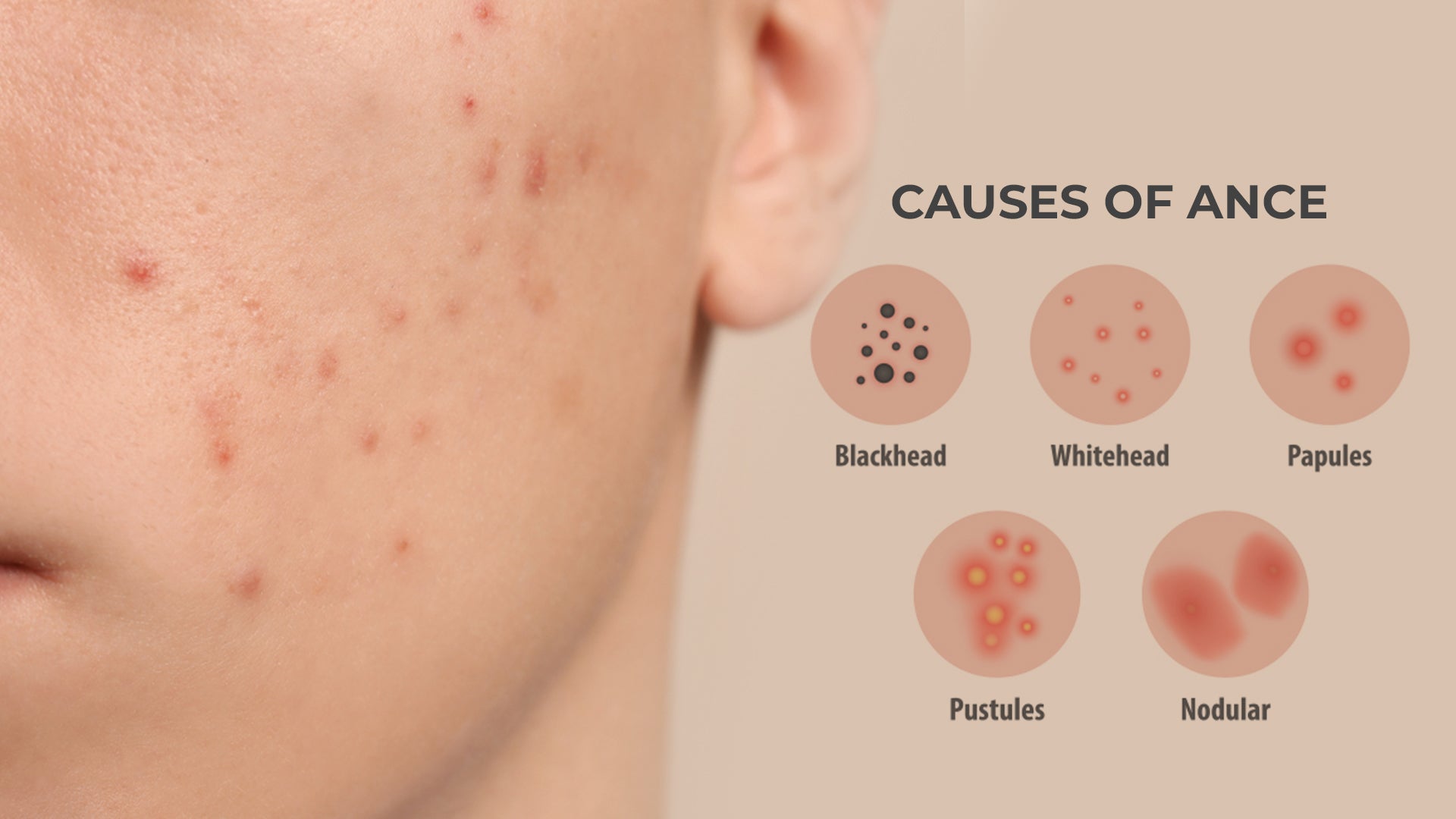Acne is one of the most common skin concerns, but there are many forms of it and hence the treatment is complex. You would have noticed that everyone’s acne is different. It is critical to recognize and diagnose the type of acne you're dealing with in order to treat it (you may have more than one).
Let’s try and understand the various types of acne, so you can manage it better.
Papules (Regular pimples)
These are classic pimples that form when excess oil, dead skin cells, and bacteria become trapped in the deeper layers of the skin, causing inflammation which can later lead to swelling and redness.
Pustules (Large pimples)
Pustules are a type of acne that occur when papules (the mild type of acne) get worse. The initial pimple becomes larger, filled and enlarged with more oil and fluid because the skin attempts to deal with the problem on its own.
Most teens with acne have a mixture of papules and pustules.
Nodular Acne (Deep Pimples)
Large and painful breakouts are called acne nodules which are caused by severe inflammation.
Acne nodules are larger than standard pimples, and they affect deeper layers of the pores and skin.
Blackheads (Open Comedones)
One of the most common forms of comedonal acne is blackheads (a.k.a open comedones). Comedones form when the cells lining the sebaceous duct multiply (cornification) and sebum production increases. A blackhead appears when the debris blocks the sebaceous duct and hair follicle.
Whiteheads (Closed Comedones)
Tiny white bumps that appear on the skin are another type of clogged pore, called white heads. They’re occasionally referred to as closed comedones because, unlike blackheads, the head of the white bump is protected by a thin layer of skin. As the pore is not exposed to the air, it doesn’t oxidize or turn black.
Acne additionally is available in various severity and it affects everyone differently. The most widely used classification of acne is simple: mild, moderate, and severe. Your skin can move between these grades because acne tends to increase and decrease on its own.
Based on the severity, you can determine the best course of action.
Mild acne: Whiteheads and blackheads, with a few papules and pustules, are called mild acne. It can usually be treated with over-the-counter acne medications. However, if it is not treated immediately, it can develop into more serious forms.
Moderate acne: Both papules and pustules in multiples covering less than half of your face are called moderate acne.
Moderately severe acne: Numerous papules and pustules with occasionally inflamed nodules on more than half of your face are categorised as moderately severely acne.
Topical retinoids and topical antibiotics (for non-inflammatory acne) individually or a combination of both are the most commonly used topical acne treatments for moderate acne.
Severe Acne: Numerous painful, large and inflamed pustules, nodules, or cysts, usually affecting most of your face are categorised as severe acne. It's difficult to get severe acne under control, and hence, dermatologist consultation is required.
Sources
- InformedHealth, Acne: Overview
- Newman MD, Bowe WP, Heughebaert C, Shalita AR. Therapeutic considerations for severe nodular acne. Am J Clin Dermatol. 2011;12(1):7-14. doi:10.2165/11532280-000000000-00000
- https://www.aad.org/public/diseases/acne/diy/types-breakouts
- https://www.nm.org/locations/central-dupage-hospital
- https://dermnetnz.org/topics/comedonal-acne






 +91 9347578980
+91 9347578980